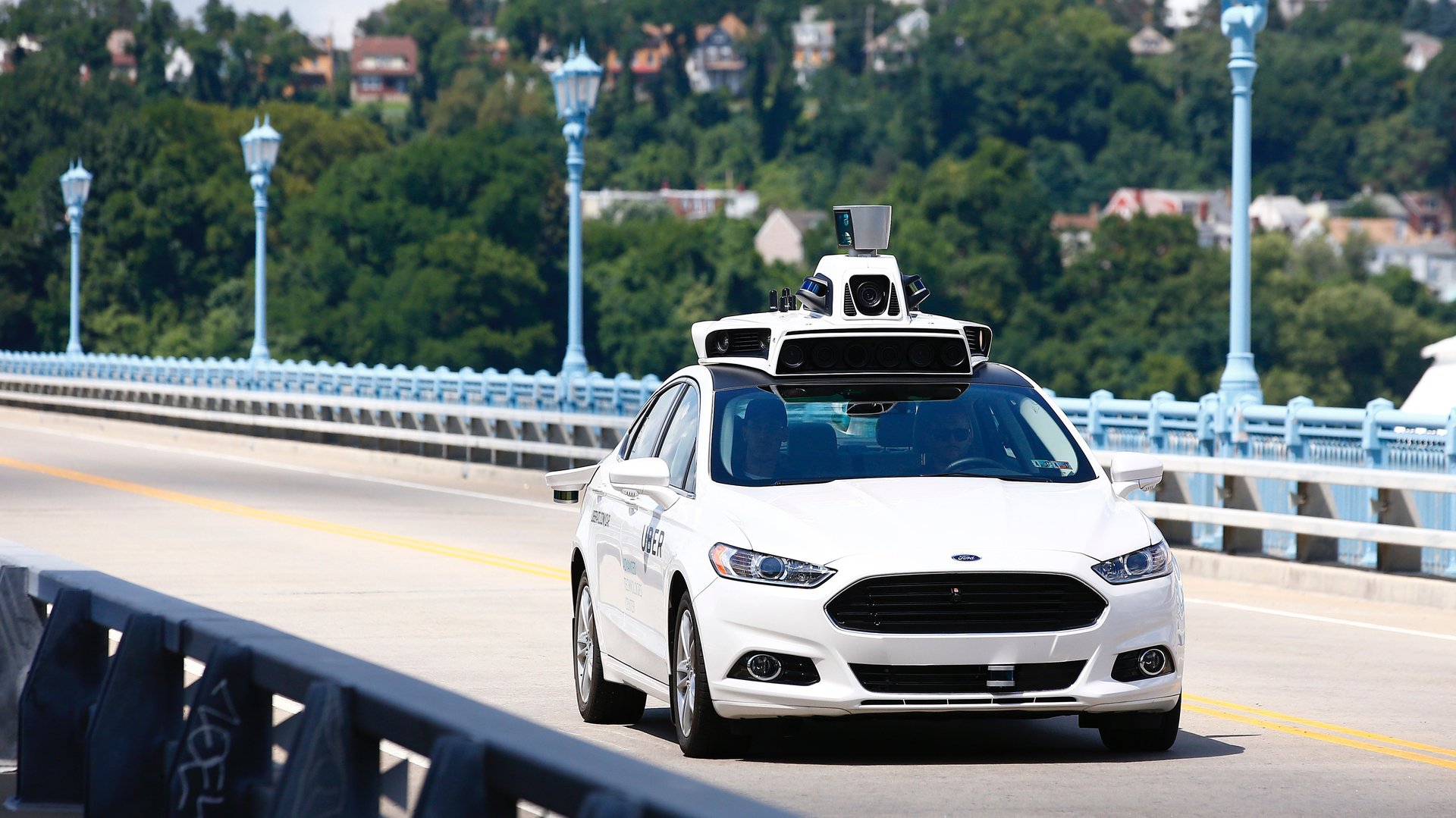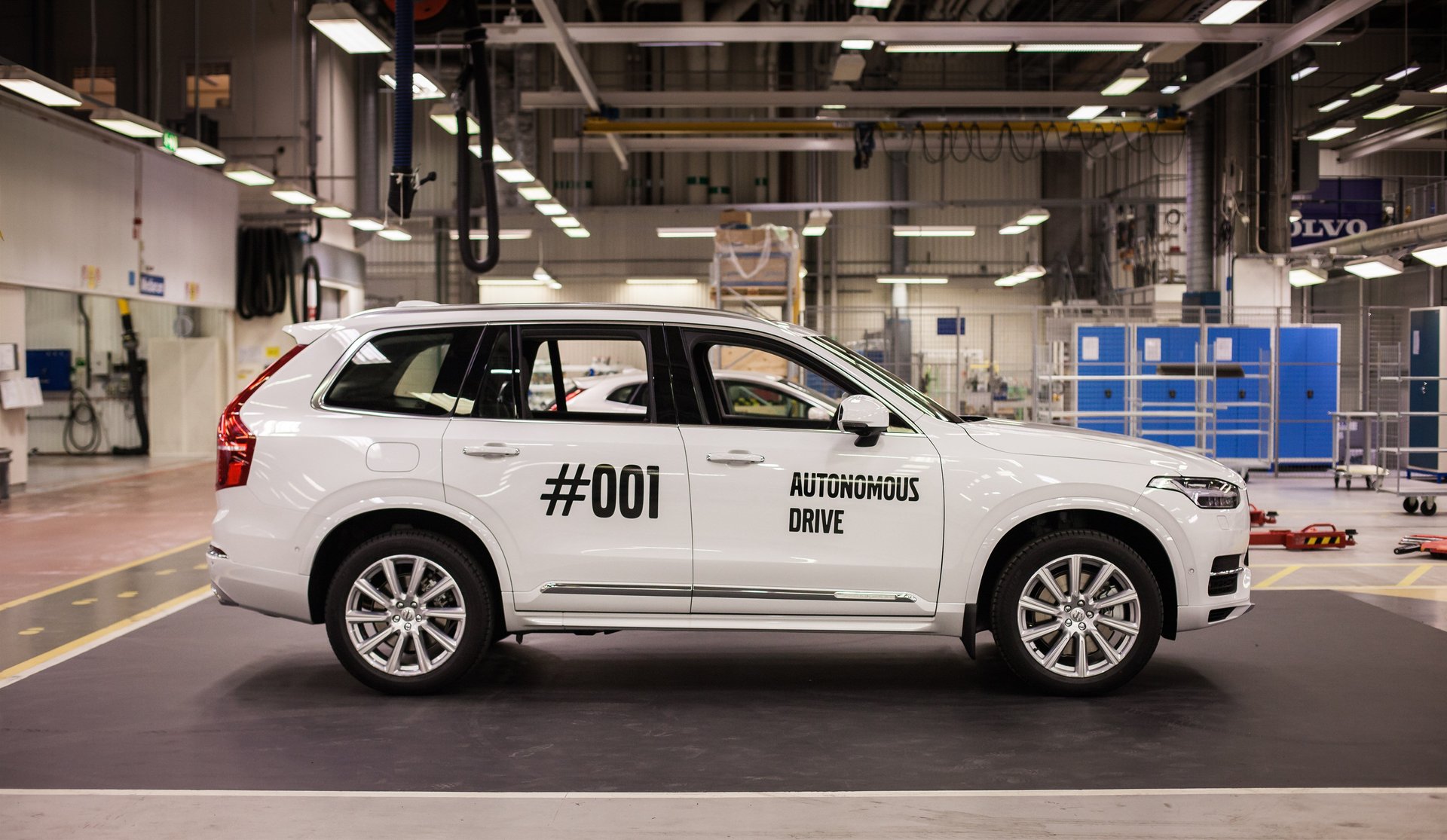This is the week self-driving cars became real
Even though it was unsettling, erratic, and possibly rushed out, my trip in a self-driving Uber car this week will most likely be looked back upon as a watershed moment. Wednesday Sept. 14 was the first time in the US an autonomous car picked up regular people and drove them somewhere (pretty much) on its own. The drive was just one event in a week hinting that the future of mobility we’ve been dreaming about may arrive sooner than we think.


Even though it was unsettling, erratic, and possibly rushed out, my trip in a self-driving Uber car this week will most likely be looked back upon as a watershed moment. Wednesday Sept. 14 was the first time in the US an autonomous car picked up regular people and drove them somewhere (pretty much) on its own. The drive was just one event in a week hinting that the future of mobility we’ve been dreaming about may arrive sooner than we think.
Ford also demonstrated what its self-driving cars can do this week. The company has been working on autonomous technology for over a decade, and recently committed to releasing a fleet of autonomous taxis in 2021. At its Dearborn, Michigan, headquarters Sept. 12 the company invited a group of journalists to try out its autonomous vehicles, and said that it will be making robot cars available to Dearborn employees in 2018. The company plans to start selling self-driving cars to the public in 2025, according to The Verge’s Tamara Warren.
Warren compared the car’s driving abilities to a “nervous student driver.” It didn’t travel faster than 30 mph, and took its time with awkward situations. But, much like my trip in the Uber, a robot-controlled Ford was able to successfully transport a person somewhere without killing them. While the pace might feel like a Disney World ride, the Ford and Uber rides do represent a step in the right direction toward mitigating the 38,000 US deaths by car accident each year.
Ford and the University of Michigan announced Sept. 16 that the company will provide partial funding for a new robotics laboratory where Ford researchers will work with Michigan students and professors to build tomorrow’s robots. The lab is set to open in 2020, and will have a “high-bay garage space for self-driving cars,” among other features.
The week also saw the reveal of Volvo’s first production-model autonomous SUV. The self-driving XC90 shocked some by looking pretty much indiscernible from a regular Volvo. Many self-driving cars shown to the public have been packed with radar, laser sensors, cameras, and other sensing equipment, or have been designed to look inherently different from the average car, such as Google’s koala-shaped self-driving car. But Volvo’s new robot car looks, well, just like a car. The company plans to begin a driverless ride-hailing service, similar to what Ford and Uber intend to do, in Gothenburg, Sweden, in 2017.

Meanwhile, Velodyne–maker of the LiDAR (laser radar) sensors that many self-driving car projects use and the recent recipient of $150 million from Ford and Chinese search giant Baidu—announced it was releasing a new smaller, higher-resolution sensor. Ford told Quartz that it planned to switch to Velodyne’s smaller sensors soon, and Uber’s forthcoming generation of driverless cars, made by Volvo, also appear to have similar smaller sensors on board, although the company wouldn’t confirm its supplier. As a result, when self-driving cars do make it to the mainstream, it may well be impossible to tell a robot car from one manned by humans. Unless the driver’s seat is empty.
Uber also sent a fleet of cars designed to map the layouts of streets to London Sept. 16. Uber told us while we were in Pittsburgh that this is partly how its cars learn to drive; they compare detailed maps with what they see on the street. Uber’s self-driving cars are already in San Fransisco and Tucson, Arizona, so it seems that the company is wasting no time setting up a network of driverless cars beyond the Steel City.
While not all the news is positive–Apple reportedly laid off a large portion of the staff it has working on a vehicle, and Tesla is still contending with the fallout from drivers dying while driving Teslas in “Autopilot” mode—there seems to have been a sort of self-driving perfect storm this week. None of these machines are yet ready for daily use, or can be trusted without a human behind the wheel, but all point to a future well robo-driving moves from fiction to fact.
If the iPhone was the first mainstream, modern smartphone, these cars are definitely the Palm Treo of self-driving cars: A great idea, if still a bit unpolished.